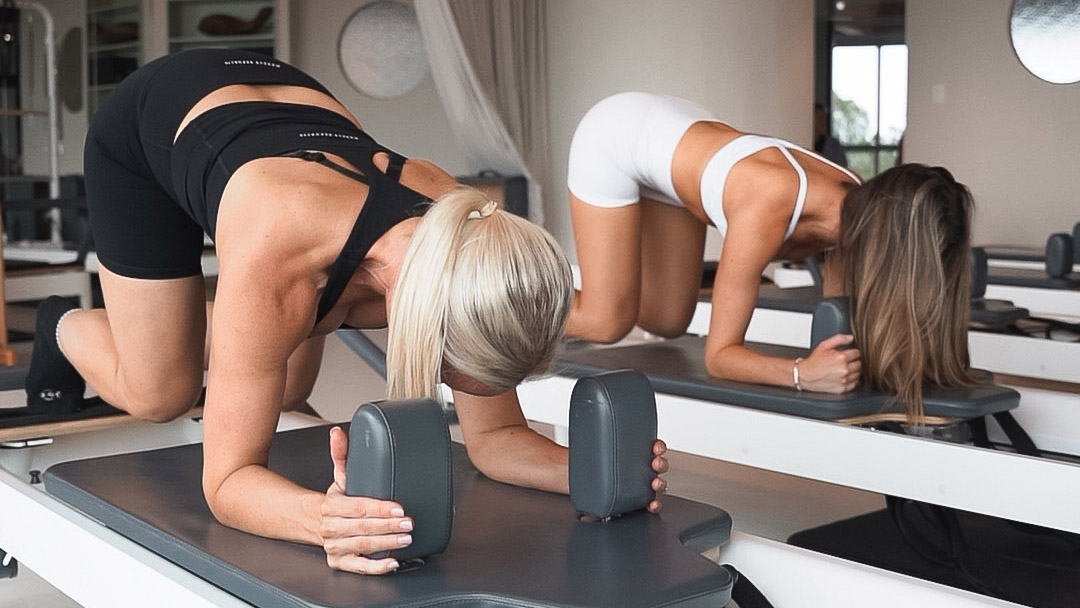
The short answer is yes – Pilates can create meaningful changes in your body shape through its unique approach to strength and movement. While the transformations might be more refined than radical, the practice offers a pathway to developing better posture, lean muscle tone, and enhanced body awareness that collectively contribute to a reshaped physique.
Understanding Body Transformation Through Pilates
Joseph Pilates’ well-known statement – “In 10 sessions you’ll feel the difference, in 20 you’ll see the difference, and in 30 you’ll have a new body” – speaks to the method’s potential when approached with consistency. Achieving these results requires regular practice, typically 3-5 sessions weekly, allowing the body to adapt progressively over six to eight weeks. This dedicated approach helps practitioners experience the full benefits Pilates offers.
Visible Changes You Might Notice
Many practitioners report subtle yet impactful physical changes. Improved posture often becomes apparent first – you might find yourself standing taller as your core engagement and spinal alignment improve. Over time, muscle definition emerges, particularly in areas like the arms, abdominals, and glutes. One enthusiast shared how regular practice helped develop more sculpted legs and a lifted seat, while another noticed their waistline becoming more defined after several months.
The practice’s focus on eccentric contractions – where muscles lengthen under tension – contributes to its body-shaping effects. This approach helps create lean muscle development rather than bulk, resulting in what many describe as a “toned” appearance. As movement specialists note, “The method works to rebalance your entire musculature, creating symmetrical strength that naturally enhances your physique“.
The Science Behind Physical Changes
Research confirms Pilates’ effectiveness for body recomposition when practiced consistently. A 12-week study showed participants developed improved core stability and muscular endurance, particularly when attending multiple sessions weekly. These physical adaptations translate to better posture, more efficient movement patterns, and increased calorie expenditure during daily activities.
What makes Pilates particularly effective is its whole-body approach. Unlike isolated muscle training, the method integrates multiple muscle groups simultaneously, teaching your body to work as a coordinated unit. This functional strength development not only reshapes your physique but enhances your capability in other physical activities and daily movements.
Transformation Timeline
Most practitioners begin noticing physical changes within four to eight weeks of consistent practice. Initial improvements often include better posture awareness and increased core engagement. By week three, many report feeling stronger during everyday movements like lifting groceries or playing with children. Visible changes typically emerge around the month mark, with more defined muscle tone becoming apparent in commonly targeted areas.
One participant in a 30-day challenge described feeling “more connected to my body’s capabilities” while observing gradual improvements in muscle definition. Another long-term practitioner noted that after six months of regular sessions, friends began commenting on their improved posture and more streamlined silhouette.
Pilates’ Unique Approach to Fitness
The “Pilates body” differs from traditional gym results through its emphasis on balanced development. While weight training often focuses on building muscle mass in specific areas, Pilates promotes uniform strength distribution. This creates what many describe as a “natural athlete” physique – lean, balanced, and functionally strong.
The method’s focus on precision and control leads to improved muscle recruitment patterns. Over time, this can help address muscular imbalances that may contribute to poor posture or discomfort.
The growing popularity of Pilates in Australia – with participation increasing 250% between 2021-2022 – reflects its broad appeal. Many newcomers find the method accessible regardless of fitness level, with modifications available for every exercise. This inclusivity allows people of all body types to experience positive changes through consistent practice.
Achieving Your Best Possible Physique
While Pilates can’t alter your fundamental bone structure, it can help maximise your natural potential. The practice excels at creating long, lean muscles through its signature combination of strength and flexibility work. For those seeking to enhance their natural curves or create more definition, regular Pilates sessions can be remarkably effective.
The key to success lies in consistent practice and realistic expectations. Most instructors recommend 3-4 weekly sessions for optimal results, combining studio work with home practice when possible. This frequency allows your body to adapt progressively while developing the muscle memory needed for sustained postural improvements.
Frequency and Commitment
Finding the right practice rhythm is personal – some thrive with daily mat sessions, while others prefer 2-3 reformer classes weekly. The beauty of Pilates lies in its adaptability; even one weekly session can maintain progress, though more frequent practice accelerates results. Here at SOHL Studio, we offer diverse class formats to keep practice engaging, from equipment-based sessions to dynamic mat variations.
SOHL Studio offers everything from beginner fundamentals to advanced training, there’s a pathway for every commitment level. Our combination of expert guidance and supportive environments helps practitioners stay motivated throughout their transformation journey.
Embracing the Journey
Approaching Pilates with curiosity rather than rigid expectations often yields the best results. While physical changes will come with time, many practitioners find the mental and emotional benefits equally valuable. Improved body confidence, better stress management, and increased energy levels frequently accompany the visible transformations.
The practice encourages celebrating small victories along the way – whether that’s holding a plank with better form or noticing your clothes fitting differently. These incremental changes accumulate into significant transformations when sustained over months and years.
